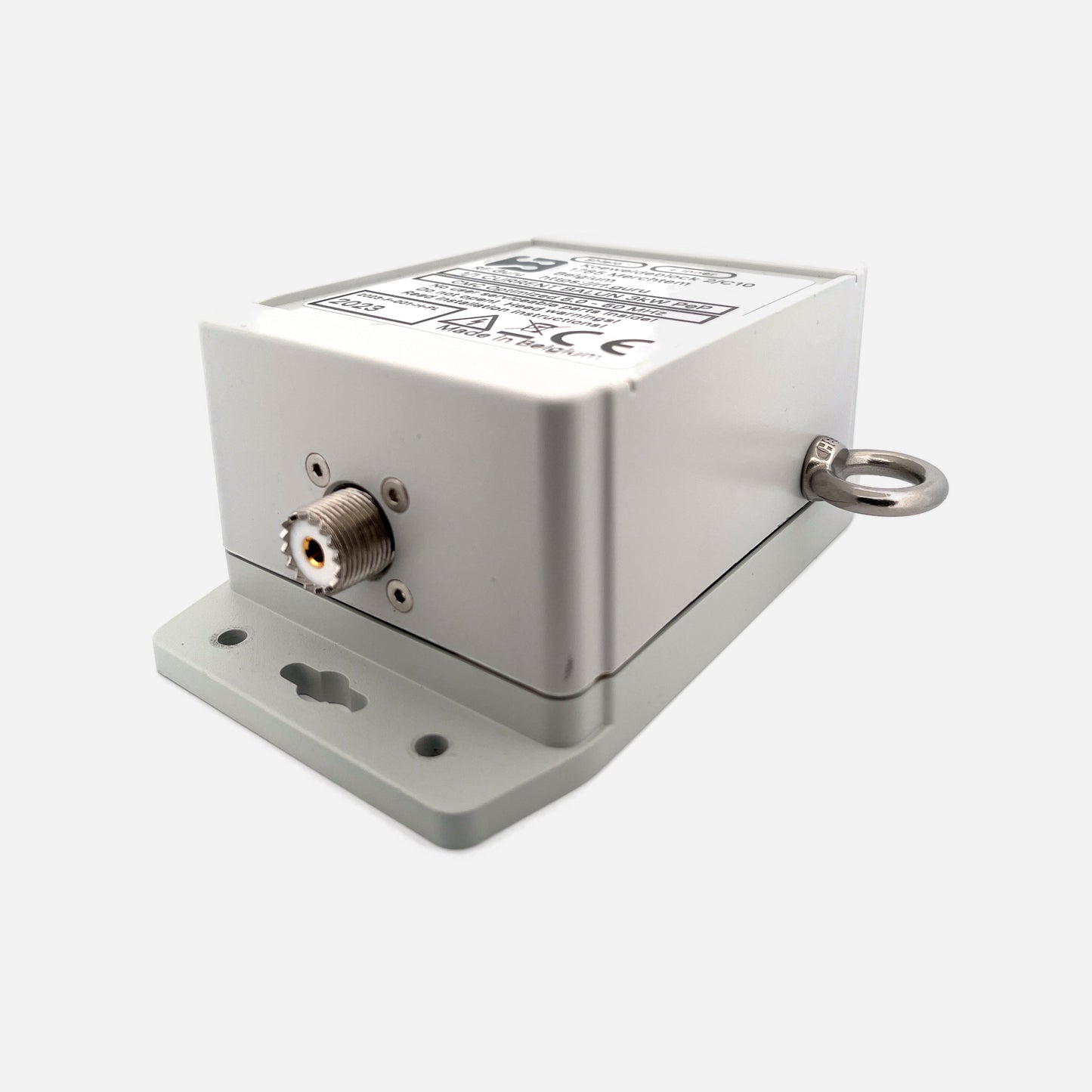RF Guru
9kW High Power Dual Core 1:1 Balun for Wire Antennas
9kW High Power Dual Core 1:1 Balun for Wire Antennas
Couldn't load pickup availability
Designed for wire antennas such as dipoles and inverted-V configurations, this high-power current choke provides stable, high-impedance isolation between the radiating wire and the feedline. It features a coax input (PL-259 or N-type) and dual INOX M6 terminals for direct wire attachment, plus dual INOX eye bolts for mechanical support. The enclosure is fully sealed and built for permanent outdoor service.
Baluns in a Nutshell
Why “Common-Mode” Is the Most Abused Term in Ham Radio
How Much Choking Do You Really Need — for RX and TX?
Built for the Long Run
Each choke is rated for high-power ICAS duty cycles, tested beyond legal-limit operation. A rugged polycarbonate enclosure with HV coating, silicone gaskets, and a decompression valve ensures long-term reliability under moisture, salt, and UV exposure. Available with either PL-259 or N-type input connectors.
Variants
160–40 m Dual-Core Current Choke (9 kW ICAS)
Optimized for low-band wire antennas (160–40 m). All values are conservative, verified under load.
| Band | Choking Impedance (Ω) | Impedance-Equivalent dB (from |Zc|) |
|---|---|---|
| 160 m | 3.5 kΩ | 42.9 dB |
| 80 m | 7.0 kΩ | 48.9 dB |
| 40 m | 8.0 kΩ | 50.1 dB |
|
Approx. 5.0 kΩ → 44.0 dB on 30 m for this choke alone.
In series with the 30–10 m choke (≈3.0 kΩ / 41.6 dB) gives ≈8.0 kΩ / 50.1 dB total. *Impedance-Equivalent (dB) values are computed directly from |ZCM| using a 50 Ω common-mode source reference. Real antennas rarely present 50 Ω in common-mode, so these dB values represent the choke’s intrinsic suppression capability — not the behavior you would see under a specific antenna load. More: Why dB Attenuation Specs on Ham Chokes Are a Mess.* |
||
30–10 m Dual-Core Current Choke (5 kW ICAS)
Upper-HF isolation suitable for EFHW, dipoles, OCF antennas, fan dipoles, and multiband operation. All values are conservative and measured under load.
| Band | Choking Impedance (Ω) | Impedance-Equivalent dB (from |Zc|) |
|---|---|---|
| 30 m | 3.0 kΩ | 41.6 dB |
| 20 m | 2.5 kΩ | 40.0 dB |
| 17 m | 2.3 kΩ | 39.3 dB |
| 15 m | 2.1 kΩ | 38.5 dB |
| 12 m | 1.9 kΩ | 37.6 dB |
| 10 m | 1.7 kΩ | 36.7 dB |
| *Impedance-Equivalent (dB) values derived directly from measured |ZCM| using a 50 Ω CM source reference. They show the choke’s intrinsic suppression, not the CM impedance of a real antenna system.* | ||
Maximum ICAS/CCS Power Ratings
| Connector Type | 160–40 m | 30–10 m | 6–2 m | Limiting Factor |
|---|---|---|---|---|
| PL-259 / UHF | ≈2.7 kW | ≈1.3 kW | ≈0.6 kW | Connector |
| N-Type | ≈10 kW | ≈5 kW | ≈2 kW | Coax |
| 7/16 DIN | ≈10 kW | ≈5 kW | ≈2 kW | Coax |
Construction Highlights
- Dual-core ferrite stack for thermal & magnetic overhead
- HV internal coating for corona resistance
- IP-rated polycarbonate enclosure
- Pressure-equalizing decompression valve
- Coax input: PL-259 or N-type
- Dual M6 stainless output terminals
- Two INOX 316 eye bolts for strain relief
- All values verified under load in real antenna setups
At RF.Guru Lab, all baluns are evaluated using EMC-standard dual-probe common-mode testing. One probe injects controlled CM current; another probe measures the CM current at the output.
This yields true Common-Mode Rejection (CMR) curves based on actual current reduction — not differential-mode VNA S21 plots.
Most VNA tests stimulate the coax in differential mode, not common-mode. Our EMC method measures real CM suppression under load, matching dipole, EFHW, and inverted-V installations.
Mini-FAQ
-
Q: Can I use the 160–40 m choke on upper-HF?
— Yes, but |Zc| drops above 30 m. Pair with the 30–10 m choke for full HF coverage. -
Q: Weatherproof?
— Fully sealed, HV-coated, and pressure-equalized. -
Q: Connection scheme?
— Coax input (PL-259 or N-type), dual M6 wire terminals, dual eye bolts for support. -
Q: Power rating?
— 9 kW ICAS (low-band choke), 5 kW ICAS (upper-HF choke). -
Q: Measurement accuracy?
— All values are conservative and measured with EMC-grade CM probes.
Interested in more technical content? Subscribe to our updates.
Questions or experiences to share? Contact RF.Guru.
Share

